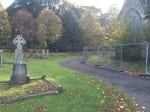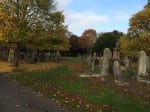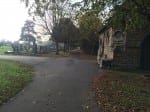Mike Leigh’s Naked is a British, semi improvised drama starring David Thewlis. It is a favourite of mine in the drama genre, and I thought it could be useful to study it’s audio dimension with reference to ‘George’.
Most aspects of the piece are very realistically constructed, and the audio as no exception to this rule. I felt this would give us some useful pointers for the sound design of George’s static sections.
Graham Fuller, interviewing Mike Leigh, pointed out that he is ‘economical with the camera movements in his films,’, and watching the scene below we can see how audio is used to enhance the power of the actor’s performance where the camerawork simply allows it to happen. The audio however tells a different story, walking the line between enhancing the mise en scene without compromising the realism of the environments, with the objects that are active (the postcard, for example) in any shot are given a sound focus to draw attention to the actors interactions with them. The postcard signifies an aspect of the two character’s shared history in the story, and the audio is used to draw attention to this, but without compromising realism of the scene.
We attempted a similar thing with the radio in the second scene (post titles) of George. The report being broadcast from the radio (cleared for use from the BBC’s The Report on Radio 4) pertains directly to the story of our character, and slips in and out of the audio ‘shot’ throughout the scene as well as remaining tied to camera perspective.
As for further observations on Naked, dialogue is a massive part of the audio and in most cases the rest of the scene is very much subordinated to it, and it is here that it digresses most substantially from our project. What is useful however, is the way the people’s bodies are put into the scenes even when they’re not speaking through the sound of mouth movements, breathing and the general sound of the physical. Considering the fact that, as post production of ‘George’ advanced we realised that the main character’s lack of dialogue (and corresponding lack of bodily movements etc in our location takes) meant the character often doesn’t seem ‘present’ in the film, I decided we should pass over the entire film and record an extra track of these. Most of the sounds the character makes in the film are additional if they are not dialogue.
The film had no specific supervising sound editor, but it’s dubbing mixer – the person who would have handled the final mix of the various audio aspects – was Sue Baker, who apparently worked in sound design for film fairly sporadically from the 1980’s to 2000, but worked as a supervising sound editor on both Donnie Brasco and Four Weddings and a Funeral. The scene from the former below is interesting from a props / dialogue mix perspective (ignoring the music) – A sense of threat and claustrophobia is suggested by the close perspective of the moves and breathing of the characters.
– 461 Words
Key Points –
Research of the film ‘Naked’ by Mike Leigh – Planning & Research
- To expand my knowledge of the theory and audio techniques deployed in the films influencing ‘George’, and in drama as a genre more generally.
Assess the technical requirements of a production to inform the selection of appropriate tools, techniques and processes



